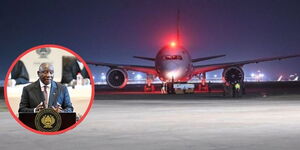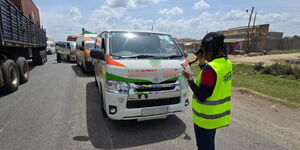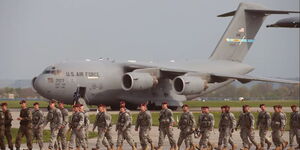A driving test is a procedure designed by the country traffic laws to examine a person's ability to drive a motor vehicle without endangering the lives of other motorists.
According to the National Transport Safety Authority (NTSA), the test is conducted once an applicant who has undergone training from an accredited institution is satisfied with taking the driving test.
During the process, one is expected to book a test's starting date, time and location through the Transport Integrated Management System (TIMS) account once approved by the driving school.
The assessment is then undertaken at Driving Test Units (DTU) in different parts of the country. The tests are supervised by driving test examiners (DTE).
During the exercise, examiners analyse their knowledge of road signals and signs, highway codes, road rules and their physical fitness to drive a car for which a license is required.
"Once an applicant has passed a driving test, he shall be issued with a certificate of competence (C of C) indicating the class or classes of motor vehicle he is permitted to drive.
"The C of C is valid for a period of three (3) months, and upon expiry, it will be at the discretion of the licensing officer to decide whether the applicant will undergo another driving test or, on the contrary, approve the application for payment of the driving license," the law states.
Here are Some Commonly Asked Questions
The Rule of Road
According to the traffic laws in the country, the norm is to drive on the left-hand side of the road.
An exception of this law applies when one is overtaking, where motorists keep the right-hand side of the road.
"Only overtake or change lanes when the road ahead is safe or clear," the law stipulates.
Highway Code
The Highway code is a set of rules and guidelines on how drivers, motorists, cyclists and other road users are expected to use the road.
Highway codes are based on the Kenya Traffic Act passed and checked by the National Assembly. They offer checks and balances aimed at maintaining road sanity.
Highway codes also offer guidelines on issuing penalties to those flouting traffic rules in the country.
Number of Eyes a Driver Has
A driver usually has three eyes. Two are natural, while one is artificial. This test is also essential in testing the driver's vision and his suitability to hit the road.
Vehicles Which Have Right of Way
In traffic laws, the right of way refers to a driver or a person who has the right to proceed first.
In Kenya, the cars which have right of way include emergency vehicles such as ambulances and fire engines, police vehicles with sirens and presidential motorcade.
Traffic limit in Towns
In cities and towns, the speed limit has been capped at 50KM/Hr, while it is 110 KM/Hr on motorways.
Meaning of road markings
Yellow line
Yellow lines are used to separate traffic flowing in opposite directions. It is helpful as when a driver sees a yellow longitudinal line along the left-hand side, it means the driver is on the wrong side of the road.
Yellow markings on kerbs are used to prohibit stopping or parking alongside such kerbs.
White line
White solid lines imply a mandatory requirement that a motorist should not cross them. Broken longitudinal lines are permissive, allowing drivers to straddle them.
Strongest Gear on a Vehicle
The strongest gear in a car is the reverse gear this is because it has no other alternative.












